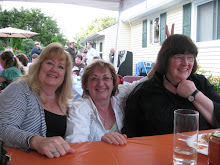Communication is the exchange of information. Today I want to remind us all to be partners in communication. As a partner the exchanges are shared. Often when speaking with individuals with limited speech and language skills we fall into the trap of conducting an interview. There is a qualitative difference between an interview and a conversation.
An interview starts off and continues with a series of questions. For example, “What did you do last night?”. Followed by “What did you watch on tv?”. Followed by “What else did you do?”, etc. Exchanges like these teach and promote the idea that the speaking person asks a question and the AAC user provides an answer. Really conversations include stories, details, comments, and questions. So how can we support and promote real conversational skills?
First of all decrease the number of questions you ask. A nice prompt for yourself is to remember to start the interaction with “Tell me about…” instead of asking a question. Reflect on what the AAC user says and then pause. Don’t be afraid of the silence. (As a prompt you might remind the AAC user that he can take a turn now.) Stay away from “yes/no questions”. These are a dead end for conversation. Share stories about yourself. Of course do this as appropriate to the context and the relationship you have with the AAC user. And finally, talk about something that is interesting. Sometimes last night wasn’t so interesting. Current events, shared experiences, and humor can make the conversation a little more interesting.
When the AAC user is using a preprogrammed or designed communication board or display this means that those of us who do the programming will need to provide different opportunities. The vocabulary made available will need to go beyond basic wants and needs, and feelings. As the designer of the vocabulary you can be sure to include the opportunity for the AAC user to ask questions, make comments, negate, and use social jargon. By being a more proactive communication partner we can support richer conversations with the AAC users we support.
